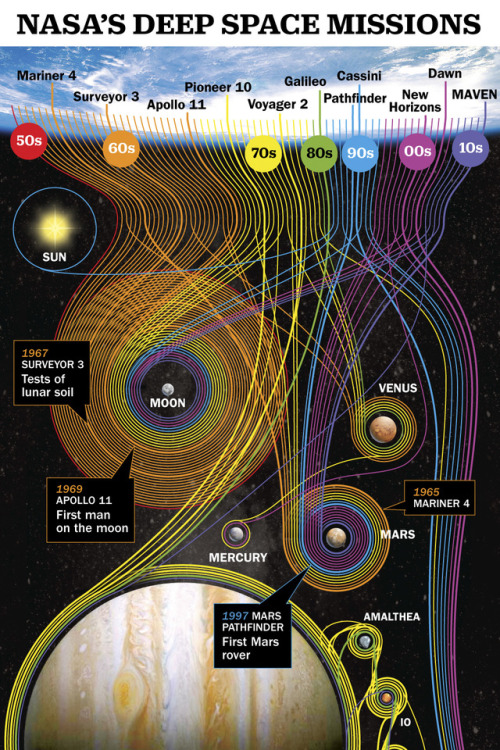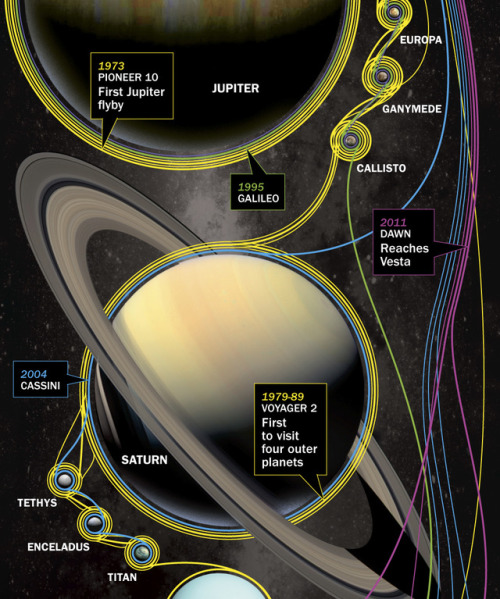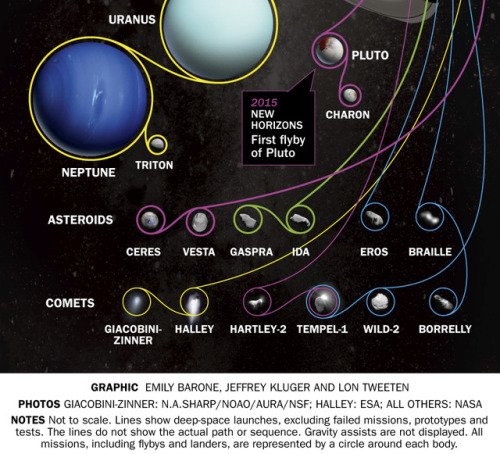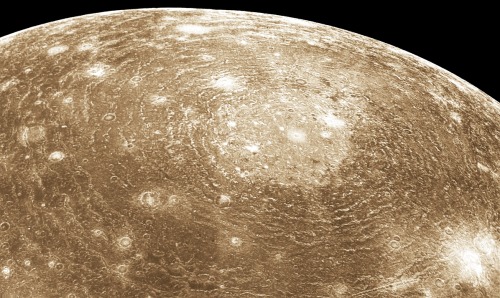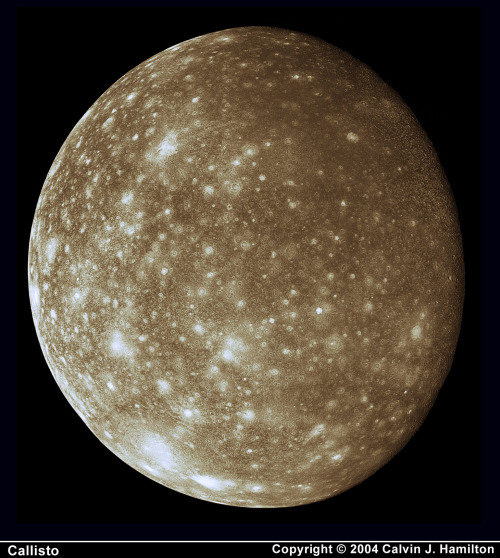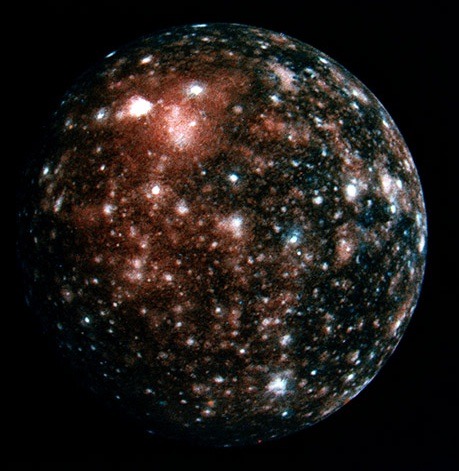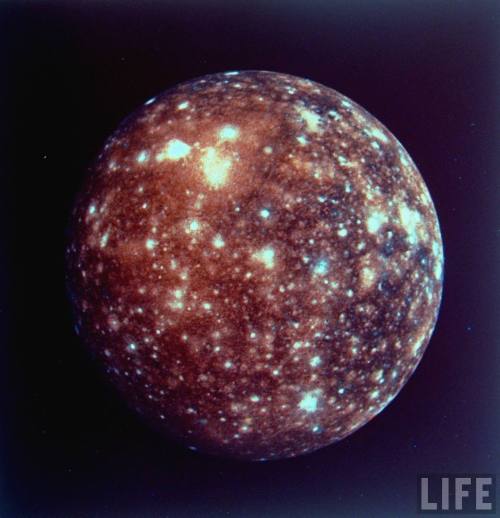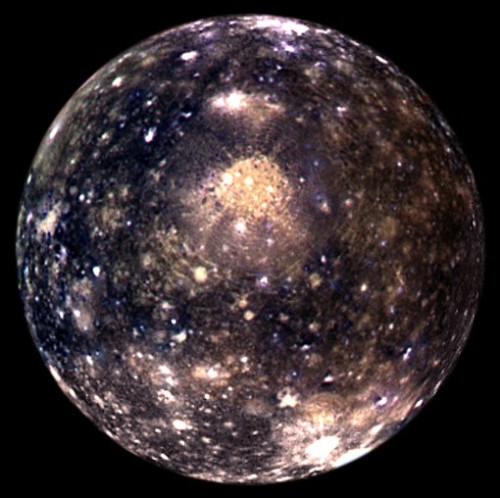Outer Space - Blog Posts

We out here (they’ll be in my store soon, too)
Guys so tommorow i will do a research about space, trees and hyenas!! I really want to know more about myself all in diferent formz ^_^



more at @search-parties ✨
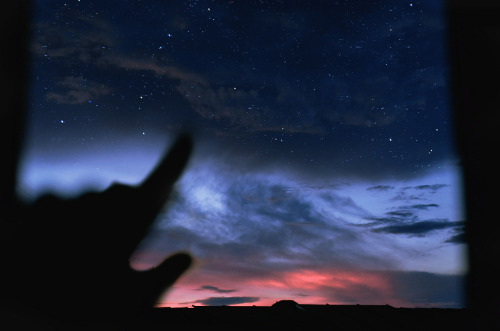
more at @search-parties ✨


Where to look, and when.

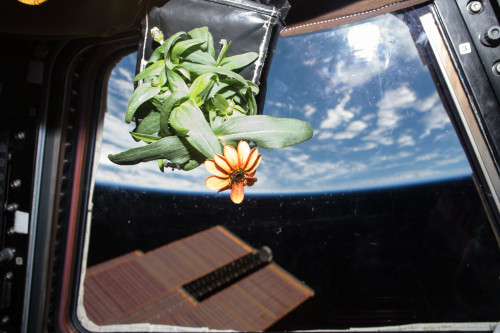

Take a moment, look outside your window. 🌷🌼
Today is the #FirstDayOfSpring in the Northern Hemisphere, also known as the vernal equinox.
#DYK Earth’s tilted axis causes the season? Throughout the year, different parts of Earth receive the Sun’s most direct rays. So, when the North Pole tilts toward the Sun, it’s summer in the Northern Hemisphere. And when the South Pole tilts toward the Sun, it’s winter in the Northern Hemisphere.
These images are of Zinnias. They are part of the flowering crop experiment that began aboard the International Space Station on Nov. 16, 2015, when NASA astronaut Kjell Lindgren activated the Veggie system and its rooting “pillows” containing zinnia seeds.
Make sure to follow us on Tumblr for your regular dose of space: http://nasa.tumblr.com.
Happy long weekend to folks in the US who are lucky enough to HAVE a long weekend! I finally fulfilled my promise to bring you an episode on comets—I didn’t last month but I had a good reason, and that reason was black holes. Now you can learn about comets! I’ve likewise talked about comets before, but now I go in-depth on what they are, some great comets throughout human history, and some of the missions we’ve sent out to collect info on comets.
Below the cut are the glossary, transcript, a timeline of all the people I mention, sources, and music credits. Send me any topic suggestions via Tumblr message (you don’t need an account to do this, just submit as anonymous). You can also tweet at me on Twitter at @HDandtheVoid, or you can ask me to my face if you know me in real life. Subscribe on iTunes to get the new episodes of my semi-monthly podcast, and please please please rate and review it. Go ahead and tell friends if you think they’d like to hear it, too!
(The next episode is... not decided, or even thought about much. It’ll go up at the end of June if I come up with a topic, though!)
Glossary
coma - the cloud of dust and gas particles that is burned off of a comet and trails behind it, helping to form the comet’s tail.
comet - a small, icy body that orbits the Sun. When its orbit takes it close to the Sun, the comet warms up and releases gases and debris that produce a visible atmosphere, sometimes called the comet’s tail. (ep. 8, 9, 33)
hyperbolic comets - comets which will only ever enter our solar system once.
long period comets - comets come near our Sun for brief times every few thousand years, following egg-shaped elliptical orbits that often send them beyond Pluto before they return to the Sun.
short-period comets - comets that orbit the Sun closely and show up at regular intervals.
sungrazing comets - comets which come within about 850,000 miles from the Sun at their perihelion, though many of these kinds of comets come even closer, to within a few thousand miles at perihelion.
perihelion - a comet’s closest approach to the Sun in its orbit.
Transcript
Timeline
Ephorus of Cyme (c. 400-330 BCE), Greek
Taqi ad-Din (1526–1585), Turkish
Tycho Brahe (1546-1601), Danish
Gottfried Kirch (1639-1710), German
Isaac Newton (1643-1727), English
Eusebio Kino (1645-1711), Spanish
Edmund Halley (1656-1742), English
Battista Donati (1826-1873), Italian
Jérôme Eugène Coggia (1849-1919), French
Heinrich Kreutz (1854-1907), German
Frank Skjellerup (1875-1952), Australian
Edmundo Maristany (1895-1983), Argentinian
Sylvain Arend (1902-1992), Belgian
Georges Roland (1922-1991), Belgian
Eugene Shoemaker (1928-1997), American
Carolyn Shoemaker (1929- ), American
Tsutomu Seki (1930- ), Japanese
Richard Martin West (1941- ), Danish
Kaoru Ikeya (1943- ), Japanese
David H. Levy (1948- ), Canadian
Thomas Bopp (1949-2018), American
Yuji Hyakutake (1950- ), Japanese
Robert McNaught (1956- ), Scottish-Australian
Alan Hale (1958- ), American
Terry Lovejoy (1966- ), Australian
Sources
Comets via Cool Cosmos (August 2013)
Comet Introduction via Views of the Solar System
On Hyperbolic Comets by David W. Hughes (1991)
What is a Sungrazing Comet? via NASA (July 2013)
Missions to Comets via NASA
Galileo via NASA
Shoemaker-Levy 9 via NASA
Rosetta Images via ESA (video)
Rosetta spacecraft image archive complete via EarthSky (June 2018)
Intro Music: ‘Better Times Will Come’ by No Luck Club off their album Prosperity
Filler Music: ‘Stories We Build/Stories We Tell’ by José González off his album Vestiges & Claws
Outro Music: ‘Fields of Russia’ by Mutefish off their album On Draught










Black Holes Are Real And Spectacular, And So Are Their Event Horizons
“Originally estimated to be slightly larger than its M87 counterpart, the black hole at the center of the Milky Way — known as Sagittarius A* — has not yet had its event horizon imaged. When you observe the Universe, you don’t always get what you expect; sometimes, you get what it gives you. Instead, it was M87’s black hole that came through first, which was a much brighter and a much cleaner signal.
What we’ve found is spectacular. Those dark pixels at the center of the image are actually the silhouette of the event horizon itself. The light that we observe comes from the accelerated, heated matter around it, which must emit electromagnetic radiation. Where the matter exists, it emits radio waves, and the dark circle we see is where the background radio waves are blocked by the event horizon itself.”
We have an event horizon, folks! It wasn’t the one at the center of our galaxy that came through first, but rather the one at the center of Messier 87: a black hole over 1,000 times more massive, but some 2,000 times farther away, than the one contained in the Milky Way. This is an ultramassive black hole that’s almost the size of the entire Solar System, and its event horizon is real.
Come get the full story on what we know, now that we have our image, about black holes in the aftermath of the Event Horizon Telescope!

New Zealand was lovely, but I already touched on what I’d be tempted to talk about with my Southern Stars episode. A person I interviewed as a potential new housemate gave me the idea for this episode because the joy of outer space is truly everywhere and anywhere. The field of astrogeology was not something I had heard of before, though I had indirectly heard of Eugene Shoemaker. I knew the comet Shoemaker-Levy 9 was named after him (and Carolyn Shoemaker, his wife). It turns out he basically founded the modern field of astrogeology! So I talk about him for quite a while, too.
Below the cut are the glossary, transcript, sources, and music credits. Send me any topic suggestions via Tumblr message (you don’t need an account to do this, just submit as anonymous). You can also tweet at me on Twitter at @HDandtheVoid, or you can ask me to my face if you know me in real life. Subscribe on iTunes to get the new episodes of my semi-monthly podcast, and please please please rate and review it. Go ahead and tell friends if you think they’d like to hear it, too!
(The next episode is going to be famous comets, and I’m shooting for an April release.)
Glossary
aeolian processes - the wind’s ability to shape the surface of a planet by eroding, transporting, and depositing materials. Most effective in desert regions, where the sparse vegetation, dry soil, and loose sediments mean these processes have the greatest impact.
albedo features - the International Astronomical Union term for an area of a planet that has a high contrast in color with the surrounding area on a planet’s surface.
chaos terrain - the International Astronomical Union term for where ridges, cracks, and plains on a planet’s surface appear broken and smashed up against each other.
chasma - the International Astronomical Union term for a long, steep-sided, deep surface indentation in a planet’s surface.
colles - the International Astronomical Union term for collections of small, knob-like hills on the surface of a planet.
dorsum - the International Astronomical Union term for a wrinkle-like ridge on a planet’s surface.
facula - the International Astronomical Union term for a bright spot on planets or moons.
fluvial processes - the ways in which rivers and streams impact a planet’s surface by eroding or creating deposits and landforms out of sediment. Sometimes, streams or rivers are associated with glaciers, ice sheets, or ice caps, and then they are called glaciofluvial or fluvioglacial processes.
fossa - the International Astronomical Union term for a long, narrow depression in a planet’s surface.
lacunae - the International Astronomical Union term for irregularly shaped depressions that look like dry lake beds on the surface of Saturn’s moon, Titan.
lobate scarp - the International Astronomical Union term for a curved slope that is probably formed by compressive tectonic movement.
mare - the International Astronomical Union term for a large, circular plain on a planet’s surface.
terra - the International Astronomical Union term for an extensive landmass like a plain or highland.
tesserae - the International Astronomical Union term for regions on the planet Venus that are tiled, polygonal shapes.
vallis - the International Astronomical Union term for a valley on the surface of a planet.
Script/Transcript
Sources
Planetary geology via Wikipedia
Lunar Lobate Scarp via the Lunar Reconnaissance Orbiter Camera
Eugene M. Shoemaker Biographical Memoirs via NASA
Dr. Eugene Shoemaker, 69; Set Record for Finding Comets via The New York Times (July 1997)
Eugene Shoemaker (1928-1997) via NASA Jet Propulsion Lab
Eugene Shoemaker (1928 - 1997) via American Astronomical Society
Gene Shoemaker - Founder of Astrogeology via US Geological Society
Eugene Shoemaker via the Planetary Society
Eugene Shoemaker Ashes Carried on Lunar Prospector via NASA Jet Propulsion Lab
Eugene M. Shoemaker and the Integration of Earth and Sky via GSA Today (April 2001)
Destination Moon by Carolyn C. Porco (Feb 2000)
“I wanted to include something to commemorate Gene’s scientific legacy. It seemed appropriate to choose his favorite photo of Meteor Crater and a photo of the last comet that he and his wife saw together, Comet Hale-Bopp. And somehow, I extracted from the dusty realm of dim memory a passage I had read from Romeo and Juliet long ago that seemed perfect for the occasion.”
Who is an Astrogeologist? via Space Awareness
Careers via the USGS Astrogeology Science Center
“Public Service by contributing to the public knowledge about our Solar System.”
Lunar Calibration via USGS
“The unmatched stability of the lunar surface reflectance (better than one part in 108 per year) makes the Moon attractive as a calibration light source; its radiance can be known with high precision and accuracy. The lunar irradiance is similar in brightness to sunlit land masses on the Earth.”
Video: Astrogeology 1963-2013: Fifty Years of Exploration via the USGS Astrogeology Science Center
Intro Music: ‘Better Times Will Come’ by No Luck Club off their album Prosperity
Filler Music: ‘Muddy Waters’ by LP off her album Lost On You
Outro Music: ‘Fields of Russia’ by Mutefish off their album On Draught

I’m back with the last episode of 2018! A conversation with a friend sparked this idea and I just ran with it while I had the inspiration, so please enjoy an episode on the strange and wonderful scales that astronomers have created to quantify data that is very unusual.
Below the cut are the glossary, transcript, sources, and music credits. Send me any topic suggestions via Tumblr message (you don’t need an account for it!). You can also tweet at me on Twitter at @HDandtheVoid, or you can ask me to my face if you know me. Subscribe on iTunes to get the new episodes of my ideally-monthly-updated podcast (I hope I have more inspiration/time in 2019), and please please please rate and review it. Go ahead and tell friends if you think they’d like to hear it, too!
(My thoughts on the next episode are the Coriolus Force, Stephen Hawking, or famous comets. The next episode will go up in 2019, hopefully in early January!)
Glossary
background risk - the average risk from random impacts of space objects with Earth.
Bortle Scale - an objective scale to measure the clarity and effect of light pollution on a night’s stargazing.
Drake Equation - a way to estimate the number of potential active, communicative civilizations in the Milky Way galaxy based on 1) the average rate of star formation in our galaxy 2) the fraction of those stars that have planets 3) the average number of planets that can potentially support life per star with its own orbiting planets 4) the fraction of planets that could support life which actually develop life at some point 5) the fraction of planets with life that actually go on to develop intelligent life and civilizations 6) the fraction of civilizations that develop a technology that releases detectable signs of their existence into space 7) the length of time it would take those civilizations release detectable signals into space.
Hynek Scale - quantifies encounters with UFOs and aliens.
Kardashev Scale - measures how advanced a civilization’s technology is based on their mastery of resources and exploration into space.
METI - Messaging to ExtraTerrestrial Intelligence
Palermo Technical Impact Hazard Scale - categorizes and prioritizes the potential impact risks of objects in space, such as asteroids.
Rio Scale - quantifies the impact of any public announcement regarding evidence of extraterrestrial intelligence.
San Marino Scale - quantifies the impact of sending transmissions from Earth to extraterrestrial intelligence.
SETI - the Search for ExtraTerrestrial Intelligence.
Torino Scale - communicates the risk associated with a particular asteroid or comet’s potential to impact with Earth to the public.
Script/Transcript
Sources
10 Unusual Scientific Scales via Listverse (Sep 2010)
John Bortle’s article on his magnitude scale via Sky and Telescope, July 2006
“I have created a nine-level scale. It is based on nearly 50 years of observing experience. I hope it will prove both enlightening and useful to observers — though it may stun or even horrify some! Should it come into wide use, it would provide a consistent standard for comparing observations with light pollution.”
Bortle dark sky scale via Big Sky Astronomy Club
Bortle dark sky scale via LSU
Palermo Technical Impact Hazard Scale via NASA
The Palermo Scale is the base-10 logarithm of the relative risk.
PS = log10 R.
The relative risk R is given by R = PI / (fB × DT), where PI is the impact probability of the event in question and DT is the time until the potential event, measured in years.
The annual background impact frequency, fB = 0.03 × E-4/5, is the annual probability of an impact event with energy (E, in megatons of TNT) at least as large as the event in question.
Torino Impact Hazard Scale via NASA
Rio Scale via SETI League
San Marino Scale via SETI League
Rio and San Marino Scale history via Wikipedia
Drake Equation via Wikipedia
Nikolai Kardashev via Wikipedia
"energy consumption at ≈4×1019 erg/sec (4 × 1012 watts)."
New Variation of Kardashev Scale Developed via Edgy Labs (June 2018)
J. Allen Hynek's Scale Of UFO Classification via The Night Sky
Hynek's UFO Classification System via The Center for UFO Studies
Intro Music: ‘Better Times Will Come’ by No Luck Club off their album Prosperity
Outro Music: ‘Fields of Russia’ by Mutefish off their album On Draught
I just watched the 4 clearly visible planets march across the sky with the moon in the center, so here’s a short guide to the night sky as the last 3 move across.
mammenxTime lapse of the milky way rolling across the night sky, flanked by the planets Jupiter, Saturn & Mars. Taken from Diskit Ladakh, this place truly has some fantastic unobstructed views of the night sky
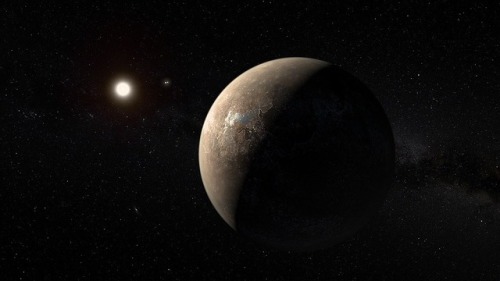
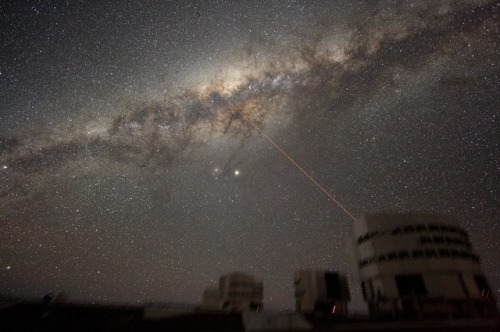
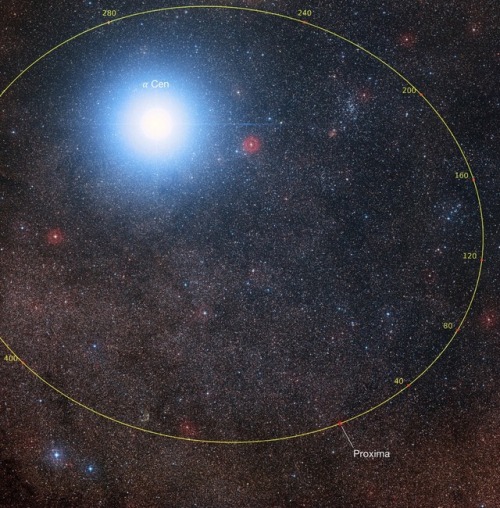
Life orbiting our closest star?
A planet has been found orbiting in the habitable zone of the closest star to earth, 4.2 light years away, named Proxima Centauri. The exoplanet, known as proxima b, has the mass of 1.27 earths but because of the shape of its orbit, the chances of it harbouring liquid water are fantastic. This vastly improves the chances that the planet sustains alien life.

“As the centuries unfold, millions of artists will live on the moon and paint the moon and Mars as we go out into the universe.”
Today we remember the fourth man to walk on the moon. Astronaut Alan Bean passed away in Houston, at the age of 86.
Bean was the lunar module pilot for Apollo 12 in November 1969, and was commander of Skylab 3 in June 1973. He retired from NASA in 1981 to devote his time to painting.

When I was in Ireland in 2013, I kept seeing signs for ‘quasar.’ I finally learned that it’s the European way of saying laser tag. It has nothing to do with quasars, which are a specific type of a specific type of galaxy. Listen to this week’s (pretty short) podcast on two types of active galaxies: quasars and blazars.
Below the cut, I have the transcript, sources, music credits, and timeline of people I talked about! If you have suggestions for topics I could cover, please send me a Tumblr message or tweet at me on Twitter at @HDandtheVoid, or you can ask me to my face if you know me. Please subscribe on iTunes, rate my podcast and maybe review it, and tell friends if you think they’d like to hear it!
(My thoughts on the next episode are the SOFIA observatory, Chuck Yaeger, or the great Stephen Hawking. The next episode will go up April 2nd.)
Glossary
active galaxy or active galactic nucleus- a galaxy with a small core of emission embedded at the center. This core is typically very variable and very bright compared to the rest of the galaxy. These galaxies emit much more energy than they should; this excess energy is found in the infrared, radio, UV, and X-ray regions of the electromagnetic spectrum.
blazar - a subcategory of active galaxy, it is an extremely bright, distant object, powered by a black hole, which emits massive amounts of energy. It is distinct from a quasar because it is even brighter.
extragalactic objects - objects outside our Milky Way galaxy.
interferometry - a group of techniques to extract information from superimposing electromagnetic waves to create interference. In radio astronomy, this is done by using a wide spread of receivers to look at the same distant object, then bringing that data together with a correlator that can create a larger, clearer picture than an individual radio telescope alone could.
lunar occultations - when stars pass behind the Moon. This is the basis for a method of determining and mapping star positions.
quasar - a subcategory of active galaxy, it is an extremely bright, distant object, powered by a black hole, which emits massive amounts of energy. It is distinct from a blazar because it is less-bright. The name is a contraction of “quasi-stellar radio source” (which is not necessarily true of all quasars—90% are radio-quiet).
torus - a donut shape.
Script/Transcript
Timeline
Walter Baade, German (1893-1960)
Rudolph Minkowski, German-American (1895-1976)
Fritz Zwicky, Swiss (1898-1974)
Gordon Stanley, New Zealander (1921-2001)
John Bolton, English-Australian (1922-1993)
Owen Bruce Slee, Australian (1924-2016)
Allan Rex Sandage, American (1926-2010)
Cyril Hazard, English (1928- )
Maartin Schmidt, Dutch (1929- )
Hong-Yee Chiu, American (1932- )
Stephen Hawking, English (1942 -2018)
Jedidah Isler
Sources
Active Galaxies via NASA (Dec 2016)
Galaxy shapes via Cornell University (April 2000)
Galaxies and Black Holes by David Merritt, published on NED by Caltech and NASA
Cyril Hazard via University of Pittsburgh
The Discovery of Quasars and its Aftermath via Journal of Astronomical History and Heritage (2014)
“Characteristically, Fritz Zwicky (1898–1974; Figure 11) immediately pointed out that ‘All of the five quasi-stellar galaxies described individually by Sandage (1965) evidently belong to the subclass of compact galaxies with pure emission spectra previously discovered and described by the present writer. (Zwicky, 1965: 1293).’ A few years later, Zwicky was less circumspect and wrote: ‘In spite of all these facts being known to him in 1964, Sandage attempted one of the most astounding feats of plagiarism by announcing the existence of a major new component of the Universe: the quasi-stellar galaxies ... Sandage‘s earthshaking discovery consisted in nothing more than renaming compact galaxies, calling them ‘interlopers‘ and quasistellar galaxies, thus playing the interloper himself. (Zwicky and Zwicky, 1971: xix)’”
Lunar occultations via Sky and Telescope
Quasars and Blazars by Matthew Whiting (a chapter in his thesis, What made the quasar blush? Emission mechanisms in optically-red quasars) via the Australia Telescope National Facility (2000)
Jedidah Isler on quasars and blazars via TED Talks (March 2015)
Quasar definition via Space.com (Feb 2018)
Intro Music: ‘Better Times Will Come’ by No Luck Club off their album Prosperity
Filler Music: ‘Into The White’ by Pixies off their album Wave of Mutilation.
Outro Music: ‘Fields of Russia’ by Mutefish off their album On Draught

February is Black History Month, and it’s been the perfect excuse to research all of the African-American people who have contributed to space research and exploration! I talk about seven astronomers and nine astronauts who have delved into outer space because it was just so dang amazing, nothing could stop them from learning about it; astrophiles, if you will. Space-lovers.
Below the cut, I have the transcript, sources, music credits, and timeline of people I talked about! Maybe you have something you want to hear me talk about that’s related to space. I’m kind of set for topics for the next few months but I’ll take suggestions here or you can tweet at me on Twitter at @HDandtheVoid, or you can ask me to my face if you know me. Please subscribe on iTunes, rate my humble podcast and maybe review it, and tell friends if you think they’d like to hear it!
(My thoughts on the next episode are the SOFIA observatory, Chuck Yaeger, the transit of Venus, or quasars and blasars. The next episode will go up March 19th, unfortunately; I have a work retreat the day I’d usually post and I don’t trust the wifi out there. See you then!)
Script/Transcript
Timeline
Benjamin Banneker, American (1731-1806)
Dorothy Vaughan, American (1910-2008)
Katherine Johnson, American (1918- )
Mary Jackson, American (1921-2005)
Ed Dwight, American (1933- )
Robert Henry Lawrence, American (1935-1967)
Doctor Arthur Bertram Cuthbert Walker II, American (1936-2001)
Frederick Gregory, American (1941- )
Guion "Guy" Bluford, American (1942- )
Doctor Ronald E. McNair, American (1950-1986)
Ilan Ramon, Israeli, American (1954-2003)
Doctor Bernard Harris, Jr., American (1956- )
Doctor Mae Jemison, American (1956- )
Neil DeGrasse Tyson, American (1958- )
Michael P. Anderson, American (1959-2003)
Leland Melvin, American (1964- )
Doctor Beth A. Brown, American (1969-2008)
Sources
African Americans in Astronomy and Space via ThoughtCo (Mar 2017)
Benjamin Banneker via Encyclopedia Britannica
Benjamin Banneker via PBS
Benjamin Banneker via America’s Library
Benjamin Banneker via Brookhaven National Laboratory
Hidden Figures (2016)
Katherine Johnson via NASA
Mary Jackson via NASA
Dorothy Vaughan via NASA
Doctor Arthur Bertram Cuthbert Walker II via Encyclopedia Britannica
Doctor Arthur Bertram Cuthbert Walker II obituary via the American Astronomical Society
Ed Dwight via The History Makers
Robert Henry Lawrence via Black Past
Robert Henry Lawrence via PBS
Robert Henry Lawrence via Hill Air Force Base
Guion "Guy" Bluford via Space.com (Feb 2017)
Guion Bluford: “I mean, I laughed and giggled all the way up. It was such a fun ride.”
Guion "Guy" Bluford via NASA
Guion "Guy" Bluford via Encyclopedia Britannica
Doctor Ronald E. McNair via NASA
Doctor Ronald E. McNair via Black Past
Doctor Ronald E. McNair via New Jersey Institute of Technology
Frederick “Fred” Gregory via NASA
Frederick “Fred” Gregory via Black Past
The Harris Foundation website
“empower individuals, in particular minorities and others who are economically and/or socially disadvantaged, to recognize their potential and pursue their dreams.”
Doctor Mae Jemison via NASA
Doctor Mae Jemison via NASA
Doctor Mae Jemison via the U.S. National Library of Medicine
Mae Jemison: “I followed the Gemini, the Mercury, and the Apollo programs, I had books about them and I always assumed I would go into space. Not necessarily as an astronaut; I thought because we were on the moon when I was 11 or 12 years old, that we would be going to Mars—I'd be going to work on Mars as a scientist. And that's despite the fact that there were no women, and it was all white males—and in fact, I thought that was one of the dumbest things in the world, because I used to always worry, believe it or not as a little girl, I was like: What would aliens think of humans? You know, these are the only humans?”
Michael P. Anderson via NASA
Michael P. Anderson via Black Past
Ilan Ramon via NASA
Leland Melvin via Space.com (Nov 2017)
Leland Melvin as Makers Men via Space.com (May 2017)
Leland Melvin via NASA
Leland Melvin via Pioneer Works
Doctor Beth A. Brown via the American Physical Society
Doctor Beth A. Brown via the American Astronomical Society
Doctor Beth A. Brown via NASA
Neil DeGrasse Tyson via Hayden Planetarium
Neil DeGrasse Tyson via the New Yorker
StarTalk Radio via Apple Podcasts
Intro Music: ‘Better Times Will Come’ by No Luck Club off their album Prosperity
Filler Music: ‘Dorothy Dandridge Eyes (feat. Esperanza Spalding)’ by Janelle Monáe off her album The Electric Lady.
Outro Music: ‘Fields of Russia’ by Mutefish off their album On Draught

I’ve gotten some feedback that episodes can be too technical. Unfortunately, that feedback came too late to save you from this week’s episode, which requires me to summarize the electromagnetic spectrum, radio astronomy, a concept called interferometry, and government regulations to talk about the topic that originally started me on this path: radio quiet zones. Please, bear with me! Pardon my mess! It was all very interesting stuff, I couldn’t resist digging into it.
Below the cut are my sources, music credits, a vocab list, a timeline of the astronomers I mention, and the transcript of this episode. I’ve bolded those sources I mention in the podcast, including the podcast that started me on this topic: The Adventure Zone! Please let me know what you think I should research next by messaging me here, tweeting at me at @HDandtheVoid, or asking me to my face if you know me. I’d love it if you would subscribe on iTunes, rate my humble little podcast and maybe review it, and tell friends if you think they’d like to hear it!
(My thoughts on the next episode are SOFIA, which you need to listen to find out what it stands for, or the pilot Chuck Yaeger. The next episode will go up February 26th.)
Glossary
aperture synthesis - the process of collecting electromagnetic radiation from a variety of separate, small telescopes and then combining this data to recreate the image at a higher resolution than would be possible with a single telescope.
frequency - the number of times a wave oscillates up and down per second.
hertz - the number of times an electromagnetic wave cycles per second. One cycle per second is 1 hertz.
interferometry - a group of techniques to extract information from superimposing electromagnetic waves to create interference. In radio astronomy, this is done by using a wide spread of receivers to look at the same distant object, then bringing that data together with a correlator that can create a larger, clearer picture than an individual radio telescope alone could.
radiation - energy that travels and spreads out as it goes.
Script/Transcript
Timeline
Joseph-Louis Lagrange, French (1736-1813)
Armand-Hippolyte-Louis Fizeau, French (1819-1896)
Edward W. Morley, American (1838-1923)
Albert A. Michelson, American (1852-1931)
Sir Martin Ryle, British (1918-1984)
Bernard Yarnton Mills, Australian (1920-2011)
Derek Vonberg, British (1922-2015)
Antony Hewish, British (1924- )
Sources
Electromagnetic spectrum via NASA
Observatories across the EM spectrum via NASA
Fermi satellite via NASA
The Neil Gehrels Swift Observatory via NASA
NuSTAR via Caltech
NuSTAR via NASA
Chandra X-Ray Observatory via Harvard
The Galaxy Evolution Explorer (GALEX) via Caltech
Kepler satellite via NASA
Hubble Space Telescope via NASA
Spitzer satellite via Caltech
Stratospheric Observatory for Infrared Astronomy (SOFIA)
Planck satellite via ESA
Spekt-R Radioastron from Russia
High Energy Stereoscopic System (HESS)
W. M. Keck Observatory on Mauna Kea
South Africa Large Telescope (SALT) in Namibia
The Combined Array for Research in Millimeter-Wave Astronomy (CARMA) via Caltech
CARMA public page (decommissioned)
Very Large Array (VLA) via NRAO
Space radio telescope (1997) via NRAO
Highly Advanced Laboratory for Communications and Astronomy (HALCA) via NASA
A timeline of the history of radio interferometry via University of Groningen (Netherlands)
Interferometers via the LIGO Laboratory
Michelson-Morley Experiment via University of Virginia
Astronomical Interferometry via Magdalena Ridge Observatory
Interferometry via XKCD
How Radio Works via How Stuff Works
Radio Spectrum Allocation via the Federal Communications Commission
Interferometry via the European Space Observatory
National Radio Quiet Zone via National Radio Astronomy Observatory
“minimize possible harmful interference to the National Radio Astronomy Observatory (NRAO) in Green Bank, WV and the radio receiving facilities for the United States Navy in Sugar Grove, WV.”
National Radio Quiet Zone via CNN
“Tucked in the Allegheny Mountains, researchers are listening to exploding galaxies at the edge of the universe – a signal that is so faint, it’s about a billionth of a billionth of a millionth of a watt.”
The Quiet Zone: Where mobile phones are banned via BBC News (May 2015)
Enter The Quiet Zone: Where Cell Service, Wi-Fi Are Banned via NPR (Oct 2013)
Green Bank Observatory in West Virginia, USA
Karen O’Neil: “The types of energies we look at are less than the energy of a single snowflake falling on the Earth.”
Characteristics of radio quiet zones via International Telecommunication Union (Sept 2012)
“transmissions below 15 GHz are restricted within a certain radius around the Arecibo Observatory, located in Puerto Rico. Since no observations are carried out, nor are any expected to be carried out above that frequency in the future, no restrictions are needed on higher frequency transmissions. The reverse is not necessarily true, however. For example, some restrictions may be imposed on transmissions below 30 GHz in the neighbourhood of the large international ALMA observatory even though it is not expected to ever observe below that frequency, due to its susceptibility to interference at these lower frequencies in the signal path.”
“It is important to emphasize that a RQZ does not imply a complete absence of radio transmissions. The existence of, and coexistence with, a range of man-made devices will always be necessary. A RQZ may include options for notification of other users and for negotiation in mitigating interference. On the other hand, a RQZ does not consist entirely of mitigating techniques implemented by the radio astronomy facility; some level of control on externally-generated interference is intrinsic to a RQZ.
A RQZ is therefore a buffer zone that allows for the implementation of mechanisms to protect radio astronomy observations at a facility within the zone from detrimental radio frequency interference, through effective mitigation strategies and regulation of radio frequency transmitters.”
ALMA Observatory website
The Scientific Committee on Frequency Allocations for Radio Astronomy (IUCAF) website
Google Map of worldwide radio quiet zones (Aug 2016)
ITU-R Recommendations of Particular Importance to Radio Astronomy by A. Richard Thompson
“the necessity of maintaining the shielded zone of the Moon as an area of great potential for observations by the radio astronomy service and by passive space research, and consequently of maintaining it as free as possible from transmissions.”
The Adventure Zone: Amnesty setup episode via Maximum Fun
Intro Music: ‘Better Times Will Come’ by No Luck Club off their album Prosperity
Filler Music: ‘Junkyard Chandelier’ by Radical Face aka Ben Cooper, who primarily releases music as Radical Face but also has at least three other bands or band names he’s working with/has released music as.
Outro Music: ‘Fields of Russia’ by Mutefish off their album On Draught

I had to skip last week to finish an article on STEM but it got me a really awesome intro to a very serious episode. Learn this week about 1) Sally Ride (a bit, just like the highlight reel on her) 2) NASA’s space shuttle program 3) the Challenger disaster that occurred January 28, 1986. It was the anniversary of this tragedy yesterday and I wanted to learn more about it and why it happened and what, ultimately, came out of that difficult time in the space shuttle program.
I have a quick and easy way for you to cut out listening to the actual recap of the disaster if you don’t want to hear about it and just want to hear the fun space shuttle facts and the changes that NASA undertook in learning from Challenger’s destruction. Below the cut are my sources, music credits, a vocab list, and the transcript of this episode. I’ve bolded those sources I mention in the podcast, and I do have a trigger warning for the actual, live-coverage footage of the Challenger disaster. Please let me know what you think I should research next by messaging me here, tweeting at me at @HDandtheVoid, or asking me to my face if you know me. I’d love it if you would subscribe on iTunes (especially since I seem to have so many problems this month with consistent timing), rate my humble little podcast and maybe review it, and tell friends if you think they’d like to hear it!
(My thoughts on the next episode are national radio quiet zones, or I could go into the transit of Venus. The next episode will go up February 12th.)
Glossary
gimbaled - moveable. In a gimbaled thrust system for rockets, the exhaust nozzel of the rocket can be swiveled from side to side, which changes the direction of that thrust relative to rocket’s center of gravity.
pitch - in flight, this is rotation around the side-to-side axis. If the object’s nose points upwards or downwards, this is changing its pitch.
roll - in flight, this is rotation around the front-to-back axis. If the object’s wings spin from horizontal to vertical, it’s rolling.
yaw - in flight, this is rotation around the vertical axis. If the pilot turns the object so they can see more to the left or to the right, with no change in the horizon’s position, this is changing its yaw.
Script/Transcript
Sources
Sally Ride (for K-4) via NASA
Sally Ride bio via NASA
Sally Ride via the Smithsonian National Air and Space Museum
Sally Ride and her sexuality via Slates blog ‘Outward’ (May 2014)
Sexual Orientation Discrimination Policy via NASA
“Employees should expect to find a diversity of sexual orientations at NASA. In the past, it was common practice to fire or to refuse to hire suspected homosexuals in the Federal workplace. Employees have been physically threatened, verbally abused, and subjected to hostile working conditions. Laws and policies have changed, and all NASA employees need to be aware of their responsibility to prevent this form of discrimination and to ensure that lesbian, gay, bisexual, and transgender (LGBT) individuals are an accepted and valued part of the diverse NASA workforce.”
Space shuttle era via NASA
1983-1986: The Missions and History of Space Shuttle Challenger via NASA Spaceflight
Space shuttle process via NASA (archived)
Space shuttle components via NASA
Gimbaled thrust via NASA
Roll, Pitch, and Yaw via the Smithsonian National Air and Space Museum
Typical shuttle mission via NASA
Challenger via Space.com (Nov 2017)
Challenger disaster via History.com — contains an autoplay video
Challenger disaster live on CNN via YouTube (Jan 2011)—tw: destruction occurs at timecode 1:35
Challenger myths debunked via National Geographic (Jan 2016)
Intro Music: ‘Better Times Will Come’ by No Luck Club off their album Prosperity
Filler Music: ‘Repent’ by Dreamend off their album And So I Ate Myself, Bite By Bite, which has cover art that scared the hell out of me when my friend gave it to me because I was on painkillers for a shattered radial head. Really good band, though.
Outro Music: ‘Fields of Russia’ by Mutefish off their album On Draught

(I broke the last link, whoops)
Another week of theory, but no fun new particles. Instead, hear me try to say a lot of names of scientists or their eponymous equations as I talk about dark energy in the universe! Learn what some astronomers think it is and why other astronomers think there are better explanations for certain nutty galactic phenomena.
Below the cut are my sources, music credits, a vocab list, and the transcript of this episode. Let your voice be heard and tell me what you think I should research next by messaging me here, tweeting at me at @HDandtheVoid, or asking me to my face if you know me in real life. And please subscribe to the podcast on iTunes, rate it and maybe review it, and tell friends if you think they’d like to listen!
(If anything about dark matter or dark energy or cosmic microwave background radiation confused you over the past few podcasts, for sure send me your questions so I can ask someone more qualified than me—my doctorate student friend! My thoughts on the next episode are still the Voyager golden records, space race history, the transit of Venus, the Moon landing, Edmond Halley, or Dark Sky Preserves and it will be up on November 20th.)
Glossary
baryons - heaviest particles. Ex. Protons, neutrons. In astroparticle physics, electrons are included in baryonic matter.
cosmic microwave background radiation - the electromagnetic radiation left over from the time of recombination in Big Bang cosmology.
dark energy - a theoretical force made up of unknown, undetectable energy. It is used to explain why the universe is expanding more rapidly over time instead of slowing its expansion.
dark matter - a theoretical mass made up of unknown particles that have not been created on Earth. It is used to explain why galaxy clusters have 10x the mass that their light output suggests they would have; why distant stars on the edges of spiral galaxies orbit at the same speed as stars near the center of the galaxy; and the accretion of gases that created galaxies at the beginning of the universe.
fundamental forces - four fundamental forces in our current model of the universe: the strong and weak nuclear forces, the electromagnetic force, and gravity.
gravitational lensing - when light from more distant sources passes near a massive star, galaxy, or galaxy cluster and the object’s gravity bends the light like a lens to provide a warped angle view of space.
Transcript
Sources
Dark energy via NASA
Dark energy via Hubble
“The strangeness of dark energy is thrilling.”
Fundamental forces via Georgia State University
Dark energy via Science Magazine (April 2017)
László Dobos: “We assume that every region of the universe determines its expansion rate itself.”
Dark energy and the South Pole Telescope via Smithsonian Magazine (April 2010)
“Knowing what dark matter is would help scientists think about how the structure of the universe forms. Knowing what dark energy does would help scientists think about how that structure has evolved over time—and how it will continue to evolve.”
Intro Music: ‘Better Times Will Come’ by No Luck Club off their album Prosperity
Filler Music: ‘Even The Darkness Has Arms’ by The Barr Brothers off their album The Sleeping Operator
Outro Music: ‘Fields of Russia’ by Mutefish off their album On Draught

We’re getting theoretical here, and not just astronomy theory but particle theory. That’s right, it’s a dark matter podcast! Learn what some astronomers think it is and why other astronomers think there are better explanations for certain nutty galactic phenomena. Hear about MACHOs and WIMPs! Also learn what dark matter is too hot, too cold, too medium, or just right!
Below the cut are my sources, music credits, a vocab list, a timeline of the scientists I mention, and the transcript of this episode. Tell me what you think I should research next by messaging me here, tweeting at me at @HDandtheVoid, or asking me to my face if you know me in real life. And please subscribe to the podcast on iTunes, rate it and maybe review it, and tell friends if you think they’d like to listen!
(There’s a lot of ever-evolving info about dark matter and I was not able to cover all of it in just one episode, so get excited to hear about dark matter’s friend, dark energy, on November 6th. My thoughts on the episode after that are still the Voyager golden records, space race history, the transit of Venus, the Moon landing, or Edmond Halley. Let me know what you think!)
Glossary
astroparticle physics - the interface between astrophysics and particle physics.
baryons - heaviest particles. Ex. Protons, neutrons. In astroparticle physics, electrons are included in baryonic matter.
bosons - particles that can exist in the same state at the same location at the same time. Ex. Photons, Higgs boson.
cosmic microwave background radiation - the electromagnetic radiation left over from the time of recombination in Big Bang cosmology.
dark matter - a theoretical mass made up of unknown particles that have not been created on Earth. It is used to explain why galaxy clusters have 10x the mass that their light output suggests they would have; why distant stars on the edges of spiral galaxies orbit at the same speed as stars near the center of the galaxy; and the accretion of gases that created galaxies at the beginning of the universe.
fermions - particles that cannot exist in the same state at the same location at the same time. Ex. Protons, neutrons, electrons, leptons.
gravitational lensing - when light from more distant sources passes near a massive star, galaxy, or galaxy cluster and the object’s gravity bends the light like a lens to provide a warped angle view of space.
leptons - lightest particles. Ex. Electrons, neutrinos, tau particles, muons.
MACHO - acronym for MAssive Compact Halo Object. Made of baryonic matter, these objects are a theoretical explanation that takes the place of dark matter and include neutron stars, black holes, or brown dwarfs.
mesons - medium-weight particles. Ex. Pions, kaons.
Planck satellite - a spacecraft that operated from 2009 to 2012. It measured the dark matter content of the universe by looking at the cosmic microwave background radiation and seeing how dark matter clumped and drew the regular matter together to form galaxies.
WIMP - acronym for Weakly Interacting Massive Particle. Theoretical particles that can pass through ordinary matter without affecting it.
Wilkinson Microwave Anisotropy Probe - a spacecraft operating from 2001 to 2010 which measured temperature differences in the cosmic microwave background radiation leftover from the Big Bang.
Transcript
Sources
Fritz Zwicky via the Swedish Morphological Society
Fritz Zwicky via the American Museum of Natural History
Zwicky: “Astronomers are spherical bastards. No matter how you look at them they are just bastards“
Vera Rubin via the American Museum of Natural History
Vera Rubin via Astronomy Magazine
Morton Roberts’ 2007 article on dark matter via Harvard
Particle classifications via PhysicsNet.co.uk
Leptons via Georgia State University, copyright 2001 and all written by Carl “Rod” Nave, who has a teaching award named after him at GSU. Go Rod!
Fermions and bosons via The Particle Adventure
MOND theory by Mordehai Milgrom, published in Scientific American Aug. 2002
Newton’s Second Law of Motion via NASA
MACHOs and WIMPs via NASA
MACHOs and WIMPs via the Encyclopedia of Astronomy and Astrophysics
Bertone, Gianfranco. Behind the Scenes of the Universe: From the Higgs to Dark Matter. Oxford U P: Oxford, 2013.
Tucker, Wallace H. Chandra’s Cosmos: Dark Matter, Black Holes, and Other Wonders Revealed by NASA’s Premier X-Ray Observatory. Smithsonian Books: Washington, D.C, 2017.
“a mysterious force that causes the observed accelerating expansion of the universe” (3).
“sterile neutrinos, axions, asymmetric dark matter, mirror dark matters, and extradimensional dark matter” (23).
“the concentration of dark matter is leveling off, rather than peaking sharply, in the central regions of this cluster” (31).
Timeline
Albert Einstein, German/Austrian (1879-1955)
Edwin Hubble, American (1889-1953)
Walter Baade, German (1893-1960)
Fritz Zwicky, Swiss (1898-1974)
Enrico Fermi, Italian (1901-1954)
Morton S. Roberts, American (1926- )
Vera Rubin, American (1928-2016)
Peter Higgs, English (1929- )
Kent Ford, American (1931- )
Mordehai Milgrom, Israeli (1946- )
Romeel Dave
Rachel Somerville
Intro Music: ‘Better Times Will Come’ by No Luck Club off their album Prosperity
Filler Music: ‘Darkmatter’ by Andrew Bird off his album Fingerlings 3
Outro Music: ‘Fields of Russia’ by Mutefish off their album On Draught
I talked about spaghettification but someone did one better and made a dang cute comic about it!






Starry Greetings!
This week’s comic: Spaghettification
https://www.youtube.com/watch?v=OGn_w-3pjMc
http://science.howstuffworks.com/science-vs-myth/what-if/what-if-fell-into-black-hole2.htm

The 10-billion-year life cycle of the Sun, illustrated by David Meltzer for National Geographic, May 1974.

Why do the Sun and Moon move the way they do? What’s up with that? Orbits? What? It’s a short but snug little episode here about the Sun and the Moon and how they look from Earth as they zoom across the sky.
Below the cut are my sources, music credits, a vocab list, the transcript of this episode, a composite image of the different phases of the Moon, and a list of the different names for the full moons through the course of a year. Let me know what you think I should research next by messaging me here, tweeting at me at @HDandtheVoid, or asking me to my face if you know me in real life. And please subscribe to the podcast on iTunes, rate it or review it, and maybe tell your friends about it if you think they’d like to listen!
(My thoughts on the next episode, because I still haven’t found the time to cover them, are the Voyager golden records, space race history, the transit of Venus, the Moon landing, or Edmond Halley. Let me know by the 6th and I’ll hopefully have the next podcast up on October 16th.)
Glossary
blue moon - when you get two full moons in one calendar month. An older definition is when you get 4 full moons in a season, the third moon is called the ‘blue moon.’
ecliptic - the path of the Sun over the course of a year.
prograde - when a planet spins from east to west.
retrograde - when a planet spins from west to east.
spaghettification - when extreme tidal forces pull an object apart in space.
Script/Transcript
Sources
Rising and setting times of the Sun on Earth via Cornell University
Seasons on Earth via Cornell University
Lunar phases and the Moon’s relationship to the Sun via Harvard
Tides via Hyperphysics
Tidal forces equation via AstronomyOnline.org
Tidal forces and spaghettification via NASA handout
Lunar phases composite via Fred Espenak
Names of the different full moons throughout the year via EarthSky.org
Blue moons via EarthSky.org
Intro Music: ‘Better Times Will Come’ by No Luck Club off their album Prosperity
Filler Music: ‘See The Constellation’ by They Might Be Giants off their album Apollo 18
Outro Music: ‘Fields of Russia’ by Mutefish off their album On Draught

TELLURIAN
[adjective]
1. of or characteristic of the earth or its inhabitants; terrestrial.
[noun]
2. an inhabitant of the earth.
3. Tellurion: an apparatus for showing the manner in which the diurnal rotation and annual revolution of the earth and the obliquity of its axis produce the alternation of day and night and the changes of the seasons.
Etymology: from Latin tellūs, “the earth” + -ian, "of, relating to, or resembling".
[Frank Moth - We Used To Live There]

I’ve been dropping the word ‘spectroscopy’ with only minimal explanation for quite a few episodes now and it’s high time I expanded on this topic. Join me for the double-digit episode of this podcast to learn about the history of spectroscopes and spectroscopy, how it taught us about the Sun and stars, and what advancements were made to take spectroscopes into the 20th century.
Below the cut are sources, music credits, a vocabulary list, a timeline of all the astronomers and chemist and physicists I mention, and the transcript of this episode. Let me know what you think I should research next by messaging me here, tweeting at me at @HDandtheVoid, or asking me to my face if you know me in real life. And please check out the podcast on iTunes, rate it or review it if you’d like, subscribe, and maybe tell your friends about it if you think they’d like to listen!
(My thoughts on the next episode were probes through the ages or the transit of Venus. I could also talk about more modern spectroscopy, and I’m planning to interview a friend after the eclipse next week about her graduate-level research into the history of the universe. Let me know by the 17th and I’ll have the next podcast up on August 28th, barring any new-job-related delays.)
Glossary
absorption lines - dark spectral lines that appear in a spectroscope when a gaseous or burned-up element has light shone through it.
angstrom - a unit of length—one hundred-millionth of a centimeter—that is usually used to express wavelengths and the distances in atoms.
emission lines - bright spectral lines that appear in a spectroscope when you burn an element up.
Fraunhofer lines - a standard set of spectral absorption lines observed by Joseph von Fraunhofer. He mapped 574 lines and designated them alphabetically from red to violet in the spectrum with the letters A through K, with weaker lines assigned other, lowercase letters.
incandescent - luminous or glowing due to intense heat.
spectroscopy - the study of light from an incandescent source (or, more recently, electromagnetic radiation and other radiative energy) that has its wavelength dispersed by a prism or other spectroscopic device that can disperse an object’s wavelength. The spectra of distant astronomical objects like the Sun, stars, or nebulae are patterns of absorption lines that correspond to elements that these objects are made up of. This area of study is the major source of the study of astrophysics as well as advancements in chemistry, astronomy, and quantum mechanics.
Script/Transcript
Sources
Prisms vs. diffraction gratings via CSIRO
Definition of ‘angstrom’ via Encyclopedia Brittanica
Definition of ‘incandescent’ via Merriam-Webster
Current uses of spectroscopy in astronomy
Some past and current satellites with spectroscopic capabilities via a John Hopkin’s professor’s old webpage
Spectral classification of stars via University of Nebraska-Lincoln
Common, A. A. “Astronomy.” In Popular Astronomy 8 (1900), 417-24. Located on Google Books preview.
Hirshfeld, Alan. Starlight Detectives. Bellevue Library Press: NY, 2014.
“the Fraunhofer lines, as they were soon to be called, originate in the sun itself, and are neither optical artifacts of the spectroscope nor the result of selective absorption of sunlight within earth’s atmosphere” (168-9).
“the flame’s radiance did not ‘fill in’ the dark D [sodium] lines , as [Kirchhoff] had expected, but reinforced the absorption of these wavelengths of light” (178).
Kirchhoff: “the dark lines of the solar spectrum … exist in the consequence of the presence, in the incandescent atmosphere of the sun, of those substances which in the spectrum of a flame produce bright lines in the same plane” (178).
“a body with a propensity to emit light at a given wavelength must have an equal propensity to absorb light at that wavelength” (178).
“expresses the wavelength of a spectral line, depending on its derivation angle and the density of grooves in the grating” (187).
“mosaic of the solar spectrum assembled from prints of twenty-eight negatives” (187).
“visual confirmation of the chemical unity of the Sun and stars” (203).
Doppler “claimed in 1842 that the perceived frequency of a wave is altered by one’s state of motion” (209).
“In Doppler’s schema, waves from a steadily approaching source are compressed: as their frequency is increased, their wavelength is shortened. Waves from a steadily receding source are stretched: as their frequency is reduced, their wavelength is elongated” (210).
“Yet history has shown that credit for an evolving theory or field, such as stellar spectrum photography, often goes not to individuals who are first to publish, but to those who most convincingly establish the validity and worth of their results” (223).
“Vogel confirmed that the Sun does not rotate as a solid body; Its rotation rate varies with solar latitude, fastest at the equator, progressively slower towards the poles” (231).
“The deviation of the star’s G line from its solar position revealed the star’s Doppler shift and, via a mathematical formula, its line-of-sight motion” (232).
“What Pickering had accomplished for stellar spectral classification with the Henry Draper project, Campbell had accomplished for stellar radial velocities with the Lick catalog” (233).
Johnson, George. Miss Leavitt’s Stars. Atlas Books: NY, 2005.
“When Kirchhoff and Bunsen made the discovery, the existence of atoms was still controversial. Once they were discovered, the effect could be simply understood: when an atom is energized, its electrons jump into higher orbits. When they fall back down they emit various frequencies of light. Every kind of atom is built a little differently, its electrons arrayed in a specific way, resulting in a characteristic pattern. For similar reasons, if you shine a light through a gaseous substance, like hydrogen or helium, certain colors will be filtered out. The result in this case is a characteristic pattern of black ‘absorption’ lines interrupting the spectrum—another unique chemical fingerprint. (The same colors marked by the absorption lines would appear as bright emission lines if the element was burned.)” (102-103).
Rhodes, Richard. The Making of the Atomic Bomb. 2nd ed. Simon & Schuster: NY, 2012.
Timeline
William Herschel, German/English (1738-1822)
Thomas Melvill, American (1751-1832)
William Hyde Wollaston, English (1766-1828)
David Brewster, Scottish (1781-1868)
Françoise Arago, French (1786-1853)
Joseph von Fraunhofer, Bavarian (1787-1826)
William Henry Fox Talbot, English (1800–1877)
George Airy, English (1801-1892)
Christian Doppler, Austrian (1803-1853)
Robert Wilhelm Bunsen, German (1811-1899)
Anders Ångström, Swedish (1814-1874)
Lewis Morris Rutherfurd, American (1816-1892)
William Allen Miller, English (1817-1870)
Pietro Angelo Secchi, Italian (1818-1878)
Armand-Hippolyte-Louis Fizeau, French (1819-1896)
William Huggins, English (1824-1910)
Gustav Kirchhoff, German (1824-1887)
Giovanni Battista Donati, Italian (1826-1873)
James Clerk Maxwell, Scottish (1831-1879)
Henry Draper, American (1837–1882)
Mary Anna Palmer Draper, American (1839–1914)
Hermann Carl Vogel, German (1841-1907)
Edward Charles Pickering, American (1846–1919)
Margaret Lindsay Huggins, Irish/English (1848-1915)
Henry Augustus Rowland, American (1848-1901)
Williamina “Mina” Fleming, Scottish (1857–1911)
William Wallace Campbell, American (1862-1938)
Annie Jump Cannon, American (1863-1941)
Antonia Maury, American (1866-1952)
Vesto Melvin Slipher, American (1875-1969)
Edwin Hubble, American (1889-1953)
Intro Music: ‘Better Times Will Come’ by No Luck Club off their album Prosperity
Outro Music: ‘Fields of Russia’ by Mutefish off their album On Draught

The Cassini probe took a picture of Saturn that includes Earth in it!
Cassini has actually taken a ton of cool photos of Saturn if you want to check those out in the wake of last week’s planets podcast.



